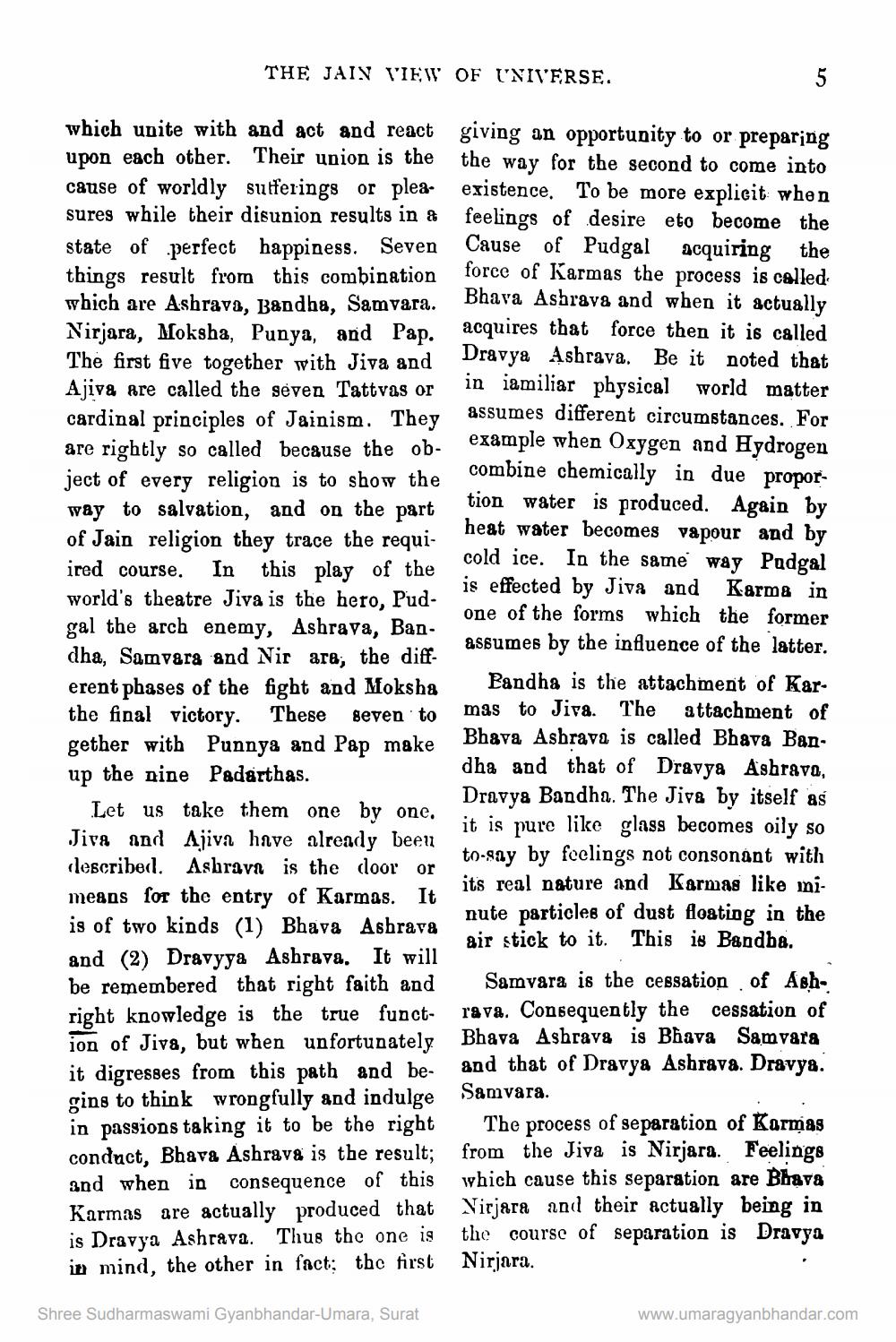Book Title: Sanatan Jain Author(s): Unknown Publisher: ZZZ Unknown View full book textPage 6
________________ THE JAIN VIEW OF UNIVERSE. which unite with and act and react upon each other. Their union is the cause of worldly sufferings or plea sures while their disunion results in a state of perfect happiness. Seven things result from this combination which are Ashrava, Bandha, Samvara. Nirjara, Moksha, Punya, and Pap. The first five together with Jiva and Ajiva are called the seven Tattvas or cardinal principles of Jainism. They are rightly so called because the object of every religion is to show the way to salvation, and on the part of Jain religion they trace the requiired course. In this play of the world's theatre Jiva is the hero, Pudgal the arch enemy, Ashrava, Bandha, Samvara and Nir ara, the diff erent phases of the fight and Moksha the final victory. These seven to gether with Punnya and Pap make up the nine Padarthas. Let us take them one by one. Jiva and Ajiva have already been described. Ashrava is the door or means for the entry of Karmas. It is of two kinds (1) Bhava Ashrava and (2) Dravyya Ashrava. It will be remembered that right faith and right knowledge is the true function of Jiva, but when unfortunately it digresses from this path and begins to think wrongfully and indulge in passions taking it to be the right conduct, Bhava Ashrava is the result; and when in consequence of this Karmas are actually produced that is Dravya Ashrava. Thus the one is in mind, the other in fact: the first Shree Sudharmaswami Gyanbhandar-Umara, Surat 5 giving an opportunity to or preparing the way for the second to come into existence. To be more explicit when feelings of desire eto become the Cause of Pudgal acquiring the force of Karmas the process is called Bhava Ashrava and when it actually acquires that force then it is called Dravya Ashrava. Be it noted that in iamiliar physical world matter assumes different circumstances. For example when Oxygen and Hydrogen combine chemically in due proportion water is produced. Again by heat water becomes vapour and by cold ice. In the same way Pudgal is effected by Jiva and Karma in one of the forms which the former assumes by the influence of the latter. Pandha is the attachment of Karmas to Jiva. The attachment of Bhava Ashrava is called Bhava Bandha and that of Dravya Ashrava, Dravya Bandha. The Jiva by itself as it is pure like glass becomes oily so to-say by feelings not consonant with its real nature and Karmas like minute particles of dust floating in the air stick to it. This is Bandha. Samvara is the cessation of Ashrava. Consequently the cessation of Bhava Ashrava is Bhava Samvara and that of Dravya Ashrava. Dravya. Samvara. The process of separation of Karmas from the Jiva is Nirjara. Feelings which cause this separation are Bhava Nirjara and their actually being in the course of separation is Dravya Nirjara. www.umaragyanbhandar.comPage Navigation
1 ... 4 5 6 7 8 9 10 11 12 13 14 15 16 17 18 19 20 21 22 23 24 25 26 27 28 29 30 31 32 33 34 35 36 37 38 39 40 41 42 43 44 45 46 47 48 49 50 51 52 53 54 55 56 57 58 59 60 61 62 ... 412
